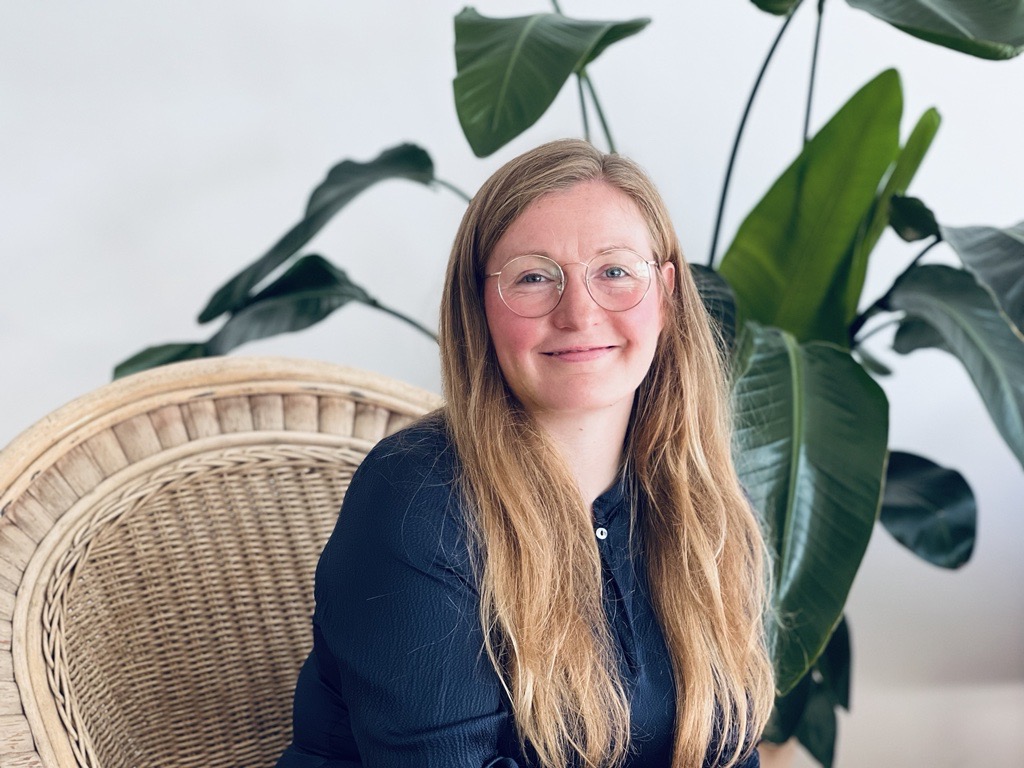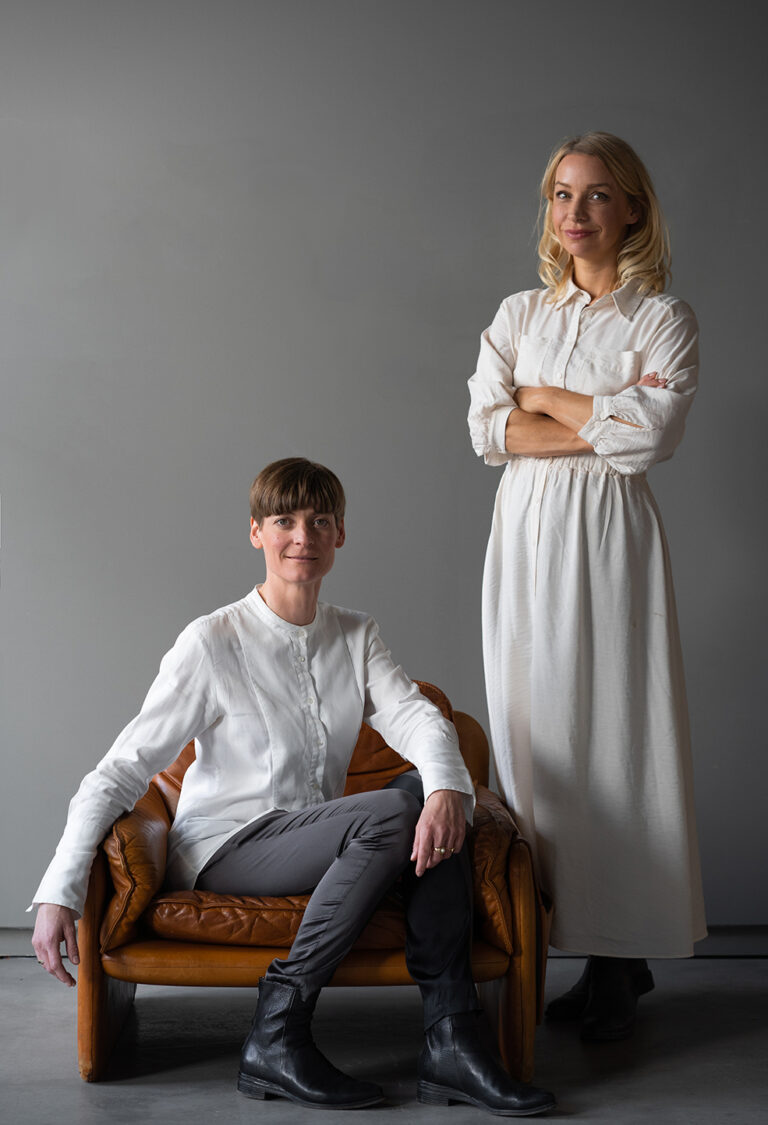Stine McBean Larsen is Senior HR Development Consultant for the Heart Association and has played a decisive role in driving the transformation of the physical working environment so that it reflects the organization's values and its employees.
Together Architecture has helped the organization to achieve the need for flexibility, community and a healthier working life. On the occasion of the completion of the project, we have had a chat with Stine about the Heart Association's working life experiments, as well as what thoughts preceded the project.
What is your ambition as a workplace?
As a workplace, we would like to be a modern, professional NGO. This means that we would like to be able to attract employees who are interested in working for a stronger purpose. We want to be an organization that works professionally and has good structures and frameworks for how we do things. The thing about being modern, it should be expressed in the experience that it is a contemporary environment. Both in the way we work in the organisation, but also in our office design. In addition, our ambition is to be an agile and cross-organised workplace where there is a strong community. One way this is expressed is that we offer our employees a flexible and development-rich working life.
Can you tell us which main challenge the Heart Association faced with its previous layout?
Before, we had a call center in an office that was physically located in a completely different location. This meant that we had around 70 employees who worked physically elsewhere, and that we were therefore not united as an organisation. We therefore had the experience that the square meters were not really being used as they could.
Our main challenge was both that the area was not well optimised, but also that the office was not set up for the needs we had in the organisation. Previously, our office lacked space for community and cross-organisational collaboration. In addition, our premises were not designed to work digitally. The meeting rooms were one of our big challenges. All of our meeting rooms were furnished quite classically with a table, some chairs and a screen, which did not support the various needs. After all, meetings are diverse. Some meetings require a formal set-up with participation via screen, while other meetings require more intimacy and relational support for the conversation in the room. Another example of how the square meters were not used optimally is our old canteen. Before, the canteen was only in use when lunch was served. The room was functional, but it was neither cozy nor aesthetic. It was therefore not a room that you wanted to stay in.
Specifically, our old work environment did not meet the real work needs that we had. In the Heart Association, we have very different functions and different types of profiles that like different types of furniture and rooms. Our old office did not nurture that aspect at all.
What concrete changes has the Heart Association implemented in collaboration with Together Architecture to meet these challenges?
We have solved the challenges we had by first of all saying goodbye to the old office where we had a call centre. We have then chosen to integrate these employees, thus becoming more employees in fewer square meters. In relation to meeting rooms, we have chosen to create more diversity so that we can promote more types of meetings. For example, we have created soft meeting rooms where we have furnished them with armchairs and lamps instead of tables, chairs and screens. In the soft meeting rooms, there is a better opportunity to have one-to-one conversations and well-being talks. We have also got standing meeting rooms for the quick meetings. In addition, we have created a room that we call "the flexible". It is a workshop room where you can also write on the wall and where you can quickly move the furniture around so that you can set up the room for the meeting or workshop in question.
The new office provides space for us to be different as people who have different types of work tasks and rhythms.
What financial conditions underlie the project?
The calculation we have made is related to the fact that we have terminated some office facilities which consisted of our call center and integrated this into our current office. The money we have saved by not having the extra office, we have spent on the furnishing of the new office. We have been preoccupied with having a business case that went to zero. It has therefore not been an additional investment for us, to buy new furniture etc. We have taken the money that has been left over, and in this way the finances are connected. We have really just moved our money around instead of adding money.
Which tools have you used to evaluate the effect of the new interior design?
We have measured the effect of our furnishings by asking about the actual experience of the room. The way we have done it is by doing a baseline survey before the office was set up. Here, the employees and managers have been asked about their experience of the old office. Some of the questions we asked were: does the office support interdisciplinary collaboration? Do you feel that the office is a modern, professional NGO? And do you feel the environment close to innovation? When we asked our employees about the layout of the old office, most of the answers were 6 (scale from 1-10). 100 days after the layout was implemented, we asked our employees the same questions. All the answers had increased by two points, so most scores are between 8 and 9. We generally find that our employees are very happy with the results. In addition to our employees, we have also experienced a great deal of interest and attention to our furnishings from the outside world.
Before the new interior, we actually did such an association exercise with the employees, where we asked, when you enter the office, what are some words that pop into your head? Here we created a word cloud where the employees described the old office as cold, strict, and as an interior that resembled a bank or a dental clinic. We did the same exercise with the new office, where it was words like homely, sensual, professional, modern.
How will you ensure that the new interior continues to meet the needs and goals of the organization in the long term?
What we have done is to create an interior that is flexible and scalable. It has been important for us to have a size that is so suitable that we can also be here in the future. A concrete detail is our choice of furniture. We have created some design criteria which are about ensuring a clear identity for the Heart Association. It was important that our furniture signaled both something homely and sensual. In addition, we had some criteria that were about the future; that it is scalable and mobile. Many of our new pieces of furniture are pieces of furniture that you can move around. So if you need to create a new area, move a team from one place to another, you can easily do that. Many of our pieces of furniture have also been given wheels. We like to think that the new interior will last in the long term. But we also know that the need changes continuously. We therefore think of the office as something that is in continuous development, as it must be able to develop with the organisation.
Can you elaborate on the Heart Association's working life experiments that preceded the project?
We did our working life project in 2020, when Denmark was shut down and we sent our employees home. In this connection, we made a pulse measurement, a kind of well-being measurement, which is sent out with the frequency that we think is necessary. When Corona hit, we chose to increase the frequency, as we needed to get a handle on the well-being of our employees. Here we asked them every week about their well-being. These measurements led to us receiving a lot of input about working life. We therefore decided to create a task force across the organisation, where we selected 6 employees. These employees were chosen across age, gender and profession and were to help define our working life model and working life experiment. Our data from these well-being measurements was used to define 9 work-life experiments that we presented to the organization in June 2020. Some of the initiatives we introduced were free working hours and free workplaces. In addition, we gave free care days and established work-life talks. We also decided to drop our hybrid meetings, as we thought it created an asymmetry in the dynamic. We have continuously followed the experiments, evaluated and adjusted them. Among other things, we had introduced dog Fridays, which we ended up dropping again. Since it is a limited group of employees who shape and decide on these initiatives, it is not a democratic process where all employees have a vote. Having said that, it is important to us that our employees are involved and asked about how they feel the measures are working.
How will Hjerteforeningen integrate feedback and learning from this project into future initiatives and decisions about the organisation's physical layout?
We have gained two different learnings from this project. There is both overall learning in running an internal project. Here we have learned some good things about the fact that involvement does not equal democracy and decision-making space. It can be very difficult to navigate, as the employees think differently. In addition, we have gained some overall procedural learning in how we run projects. We can use this learning, not just in interior design projects, but for larger projects in general. In relation to the interior design project, one lesson we have learned is the importance of bringing some professional skills on board. The competence that Together Architecture has represented has been very important to us, as it is not competence that we have internally in the organisation. After the collaboration, we have been confirmed that this is an approach we must continue with. Last but not least, we have learned the importance of how to get involved and ask the right questions. If I ask the employees if they want their own desk, most of them say yes. But I ask what their working day looks like. So maybe not everyone needs their own desk.
We are constantly working to test our new initiatives. We always try to create a prototype of the environment that we want to promote in the long term. In relation to the major interior design and transformation, we have made a 100-day evaluation. We know that when we have to change the behavior of our employees, it takes some time before you get used to the new change. It takes some time for us to change our habits. It is therefore important that you are not asked about the experience of the new environment too early.
We are ready to help your company or organization create spaces that focus on employee needs, social relationships and well-being. Email or call us today to arrange a coffee meeting.

